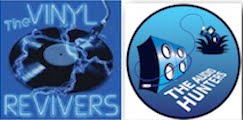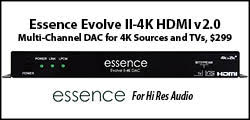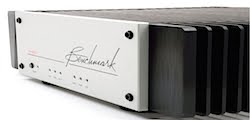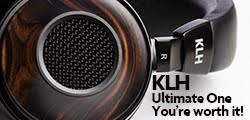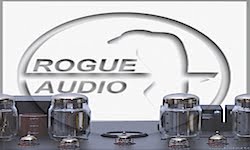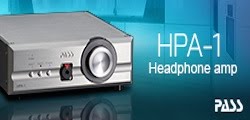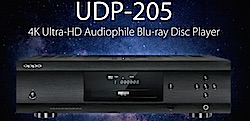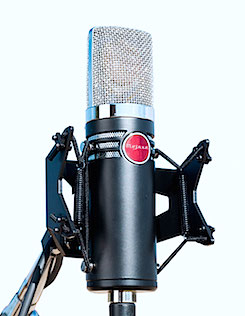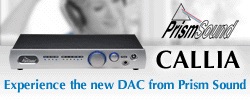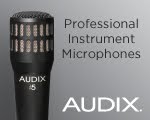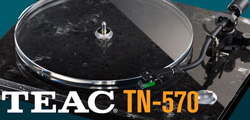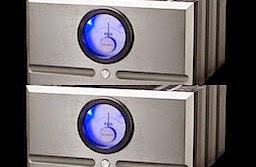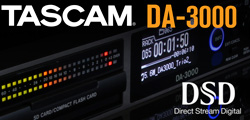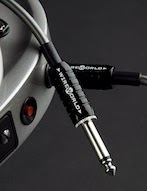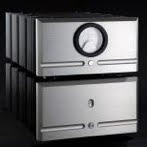
by John Gatski
Despite the trend toward lower-cost Blu-ray players, it’s refreshing to see that the high-end still matters to some of the major electronics giants. Pioneer, Sony and Denon have released lower-cost units as the mass market acceptance buoys the BD product niche, but these companies also are introducing new players aimed at the high end of the videophile spectrum.
One of the best examples of a high-end Blu-ray player is the Pioneer Elite BDP-09FD, released just a few months ago. Priced at $2,199, this quality, made-in-Japan BD player can output video that may be the best of its class, and audio that rivals expensive separates.
The BDP-09FD was designed to be the flagship player for owners of Pioneer's Kuro high-end plasma displays. Those displays are being phased out by 2010, as Pioneer exits the video screen biz, but the fine performance of this player will make everybody else’s HD screen look great.
Features
The BDP-09FD has all the features the high-end videophile wants, including HDMI 1.3 compatibility, BD Live, Bonus View, internal decoding/analog delivery of all surround formats, including Dolby Tru-HD and DTS Master and linear PCM.
Being an avid fan of the high-end, I can appreciate Pioneer’s attention to detail with the BDP-09FD. Weighing in at a beefy 31 pounds, the machine utilizes a steel-reinforced frame, double-layer top panel, and solid-steel bottom plate to house its internal electronics. Internally, the player is powered by a large, well-filtered, torroidal transformer, and has separate power supplies for the video and audio sections, which are also housed on separate boards. Well-built indeed.
Audio-wise, the player employs eight Wolfson DACs (8740) in dual mode that can deliver up to 24-bit, 192 kHz performance in a 7.1 configuration. As an audio fanatic, I am pleased that the Pioneer internally decodes all multichannel audio-for-video formats, including the lossless Dolby Tru-HD and DTS Master high resolution formats. It will also playback high-resolution audio Blue-ray music discs in formats up to linear PCM 23-bit/ 192 kHz, in stereo or in multichannel mode.
Although it is not a DVD-Audio player, it will play high resolution 24-bit/96 kHz stereo audio recorded onto DVD Video discs, such as a Toast-burned Music DVD disc, a tool that I frequently use for home authoring. Pioneer also avoided SACD compatibility with the BDP-09FD. Most likely the electronics giant believes that SACD and DVD-A are fading formats, and that the future of high-resolution music on disc is likely to be Blu-Ray.
On the video side, the BDP-09FD’s design is impressive. It processes the native 1080P video via its 12-bit, 297 MHz encoder, and professional-grade, Marvell® 88DE2710 digital video format converter with Qdeo™ video processing, which is said to offer noise-free processing in its scaling and de-interlacing functions. Overall, the result is full-resolution and upconverted video that is stunning.
Other players I have sampled have sharp, detailed video, but the Pioneer has sharpness and a life-like smoothness that lesser, cheaper players cannot match. If you want to point out the difference between a more expensive high-end player and a few hundred dollar model, the Pioneer Elite is the example.
The HDMI 1.3 spec output allows transmission of 48-bit Deep Color support, X.V. color and AVC-HD, as well as the bitstreamed multichannel and stereo audio. Speaking of HDMI, the Pioneer is one of the few players that offers two HDMI outputs, so you can route the video directly to the HD display using one HDMI port and the other to transmit the audio to a processor/preamp or receiver.
The Pioneer BDP-09FD also does not skimp on the latest Blu-ray features, including BD Live, which allows access to extra material relating to a disc’s content that is downloaded from the Internet. The player downloads the material via the Ethernet cable and stores it into internal memory (4 GB). Pretty cool! It is also DIVX compatible.
On the front panel, the BDP-09FD looks like a high-end CD player or DVD player with it large 2-RU sized package. The BD player’s gloss black cabinet is attractive and looks and feels top-end. The front panel LED display radiates its information in the Pioneer’s amber hue that the company has used for several years.
With most AV component functions now handled by the remote, the front panel buttons are few: Power, Track Advance/Back, Play, Open/Close and On/Off. There are also front panel buttons for the Pure Audio mode and Output Resolution. The Pure Audio mode shuts off various output paths for audio and video jacks, other than the ones selected for the playback, to offer as high quality audio playback as possible.
The back panel contains a full array of connections. It has jacks for almost any type of audio or video routing (no balanced XLRs though), including eight audiophile-grade gold-sputtered RCA analog output jacks, which are generously spaced apart for use with high quality cables. Many of the lower-cost, small-footprint, BD players that offer analog multichannel output analog output, cram the jacks so tightly you are forced to use cheap cables with small connectors.
Other connections includes the two HDMI jacks (HDMI Main and HDMI Sub), Ethernet port for connection to the Internet for BD Live and software updates, an inactive RS-232 port, component video outputs (BNC), and digital audio output jacks (TOSlink and coaxial).
 The two HDMI jacks allow video to be simultaneously output from both ports — in case you want to feed two screens. If you want to run the high resolution 1080P video directly to the video monitor and the digital multichannel audio to the processor/preamp or receiver, you have to use the HDMI Main for audio and HDMI Sub for the video; the latter carries no audio. Also, audio can only be output via the HDMI Main or Multichannel analog option, not both at the same time.
The two HDMI jacks allow video to be simultaneously output from both ports — in case you want to feed two screens. If you want to run the high resolution 1080P video directly to the video monitor and the digital multichannel audio to the processor/preamp or receiver, you have to use the HDMI Main for audio and HDMI Sub for the video; the latter carries no audio. Also, audio can only be output via the HDMI Main or Multichannel analog option, not both at the same time. As with all BD players, an internal fans cools the internal components. The BDP-09FD is fairly quiet with its large chassis absorbing much of noise. The disc-drive noise on load up is apparent, but never obtrusive.
Setup
Blu-ray players are essentially dedicated AV playback computers, using very efficient optical discs as the storage media. Thus, their setup is not as simple as a DVD or CD player. There are numerous setup parameters that need to be set. The Pioneer’s BDP-09FD’s setup menus are many, but not that daunting. I found that through the Initial Setup and Tools menus, it only took about 15 minutes to enable the necessary settings. All the function controls are located on the remote and with a little exploring, it is all quite logical.
The Initial/Advanced Setup menu includes adjustments and settings for choosing the desired video output path, audio output path, speaker setup for analog output (5.1 or 7.1, small/large size, fixed or variable level, level setting and distance). The menu also contains HDMI settings, playback options, parental control, language preference and network setup.
The Initial Setup mode has to be set up before you run a disc. Those menu options are not available after a disc starts up, although some of the functions can be set via the remote while a disc is playing, i.e. channel level. Video output resolution and the audio soundtrack selection also can be adjusted during playback.
The Tools menu allows for various setup and adjustments while the disc is playing, including the video output resolution, audio soundtrack and analog channel level, and audio/video sync.
The Initial Setup menu includes settings for Video Output (HDMI or Component), Audio Output (HDMI or analog), HDMI Main and HDMI Sub adjustments (including Deep-Color Setting and High Speed connection).
In the Audio Output sub menu, you can choose HDMI jack or Coaxial RCA jack for digital signals, or the internally decoded Analog Multichannel or Stereo, via the analog jacks. The HDMI jack bitstreams or passes decoded output of Dolby Digital through Dolby Tru HD; DTS Standard through DTS Master, as well as linear PCM (up to 24-bit/192 kHz 7.1). The Coaxial jack can output Dolby Digital, DTS 5.1 and linear PCM stereo up to 96 kHz.
The Analog Output option enables internal decoding through the multichannel decoder/Wolfson DAC circuitry, and it decodes all formats including, Dolby Tru-HD (7.1) and DTS Master (5.1). The Audio Output mode also selects 2-channel or multichannel output.
The Speaker Setup Menu includes sub-menus for Audio Output Mode, Speaker Size (number of speakers, large or small size) and subwoofer crossover. In the Speaker Setup mode, the Pioneer includes the Rear Left and Rear Right channel options for 7.1 discrete multichannel output. If Rear Left and Rear Right are not selected, the sounds from those channels are mixed into the normal surround channels.
The Speaker Distance adjustment allows the user to measure and set the distance for each speaker. This option implements digital delay so that the sounds arrive from each channel in time coherency to the listening position.
If Audio Output is set to Fixed, the analog level has to be set in the processor. If Variable is selected, the Speaker Channel Level allows the Pioneer’s analog channel output levels to be matched to compensate for level discrepancies, due to unequal speaker distances from the listening position or use of unmatched speakers. Each channel is fed an internal test tone that is output, one at a time, via the analog jacks to the processor or receiver, then on to the speaker. The user then measures the level, in decibels, with a hand-held loudness meter and matches all the channel levels at the listening position for optimal speaker balance.
The test signals can be set to automatically advance through each channel, or you can set it to manually output the test signal, one channel at a time. Each channel can be increased or decreased in level up to 6 dB.
I discovered the Pioneer BDP-09FD’s only flaw in the Speaker Channel Level mode. The subwoofer test tone is not output at a significant-enough level to match its output to the other channels. The subwoofer test tone does not have as much level as the front or rear channel test signals, which means you may think that the subwoofer is not outputting enough level, even though it might be.
In order to get an accurate reading with the subwoofer, I inserted a multichannel measurement test tone DVD, and used the BDP-09FD's channel level adjustments to match the speaker output levels. I found that in my room, the subwoofer was off only 4 dB, which was easily compensated with the level control in the Speaker Channel Level mode.
When I asked Pioneer about this problem, they said they were aware of it, and the manual recommends setting the subwoofer by ear — not with the internal test tone. I believe this anomaly is something that Pioneer should be able to remedy via a future software update.
The Pioneer has a host of other adjustments modes, including setting the video resolution (1080P, 1080I, 720 P, 480P and 480I, or Source Direct) to best match the screen and the source. The player can downconvert or upconvert a source’s video resolution, depending on which looks best with your display. For example, I found that DVDs always looked better on the 1080P Sony LCD when upconverted from their native 480P resolution to 1080P.
The video menus also allows several preset image modes: LCD, Pioneer Plasma, Normal Plasma, Projecion, Theater, and three memory modes, in which you can go in and adjust numerous video settings, such as block noise, black level, white level, fine detail, and other video tweaks, to fine tune the picture.
As previously mentioned, the Tools mode is the only set of setup adjustments that can be made once a disc has started playing; it includes selecting the audio soundtrack. Most BDs have a English-language high-resolution, lossless multitrack plus optional foreign language multichannel sound tracks that are usually in one of the standard lossy formats.
The channel levels can be adjusted in Tools mode, making it easier to adjust when the disc is playing. The audio/video sync adjustments allows for automatic or manual syncing of the video soundtrack to the audio, which can be a problem with some movies that have a lot of dialogue.
The setup
I reviewed the BDP-09FD in a 5.1 multichannel set up with a separate audio processor, five channels of amplification, powered subwoofer and a Sony Bravia XBR4 52-inch LCD with 120 Hz refresh rate. The player was connected via HDMI and analog multichannel analog cables, to either a Rotel RSP-1570 preamp/ processor or an Integra DHC 9.9 Pre-Pro preamp/processor.
The preamps were linked to my USA-made, Carver amplifiers operating at 200-watts-per-channel in Class AB mode. The three-channel A753 Carver amp drives a pair of professional Westlake LC8.1s left and right front channel speakers and a Westlake LC2.65, center channel speaker. The second Carver amp, A500X, powers a set of NHT Ones used for the two surround channels. The subwoofer channel is linked to a Paradigm Servo Reference 15.
All player-to-preamp/preamp-to-amp interconnections were made with Alpha-Core Goertz solid-silver conductor cables; the speaker cables were provided by MIT. The PPC Locking HDMI 1.3 cable connected the BDP-09FD to the LCD or to the processor, depending on which configuration I was using. This well-priced HDMI cable ($73 for 12 ft.) meets all the latest HDMI specs and has a simple, but effective locking tab that keeps the cable firmly in place on both ends of the component. Its video quality was the equivalent of other quality high-end cables.
For clean AC power, I used a Panamaax M-7500 Power Conditioner and Music Cord premium power cords for all IEC-plug components. Channel levels were matched using the professional Audio-Control RTA-3050 Real Time Analyzer, GoldLine home theater test signal DVD and a measurement microphone.
I played numerous BDs with various soundtracks, including linear PCM, Dolby Tru-HD and DTS Master. I compared the BDP-09FD video and audio soundtrack quality to a borrowed Sony BDP-2000ES, a flagship player from 2008 with excellent video, but limited analog and digital multichannel output options (no DTS Master decoding or bitstreaming). I also compared the Pioneer to my Sony BDP-550, an intermediate-priced BD player that offers bitstream audio via HDMI or internal decoding of all BD audio formats. And it delivers a smackin’ good picture — especially for only $399.
Because Pioneer touts the audiophile grade internal conversion, I also used it as a reference stereo player with high-resolution 96 kHz PCM from commercial DVD-V audio discs, such as those from the AIX label. I also played my own recorded guitar tracks burned to DVD-V via Roxio Toast.
With some high-resolution music on Blu-ray now available, I additionally auditioned classical tracks from the European L2 label. The L2 music options for each disc include: 24-bit/192 kHz linear PCM encoded stereo or 5.1 multichannel, and 5.1 channel lossless Dolby Tru HD 24/192. I compared the Pioneer’s audio quality via its internal DACs with several high-end, separate D/A converters and high-end DVD Audio players. Separate converters included the Lavry DA10, Benchmark DAC1 Pre and Mytek Digital Stereo 96 kHz. Integrated PCM players included the $6,000 Esoteric DV-50 universal player, and the made-in-Japan, $1,200 Yamaha DV-2300 MkII universal from a couple of years ago.
The Audition
First, the Blu-ray movies. In a word, fantastic! The BDP-09FD’s video quality is the best I have ever seen from a BD player. Via the QVideo/Pioneer circuitry, the video quality is sharp at 1080P, but also ultra-smooth and dimensional. Motion artifacts are mostly nonexistent (the LCD is the limiting factor) and colors are as natural as a photograph, a big one that is with a 52-inch LCD.
I watched a multitude of movies — Mel Gibson’s Apocalypto, the animated features Bolt and Cars, the action-packed blockbusters Transformers and Live Free or Die Hard, as well as the fantasy story line of the Harry Potter and the Prisoner of Azkaban.
I also sampled several DVDs, such as the animated film Wally and 1996 adventure thriller/ James bond flick Goldeneye that were upconverted to 1080P through the BDP-09FD's video conversion engine in order to match better match the XBR4’s 1080P native video resolution.
Impressive video!
The 1080P HD recorded jungle scenes of Apocalypto were extraordinarily lifelike. I watched the movie several times on the BDP-09FD and then the Sony BDP-2000ES and the BDP-550. The Sony video deliveries were very good and you would not be disappointed watching them one at a time. But when you switch back to the Pioneer, it relayed a noticeable increase in lifelike detail with nary a hint of video artifacts.
Another case-in-point is the animated BD Bolt, a 2009 blockbuster cartoon with 1080P/24 frame resolution and a clean, dynamic DTS HD Master lossless 5.1 soundtrack. Even after careful set up and tweaking of the Sony decks, the Pioneer’s picture was sharper, yet so smooth without any edge noise. The background detail was more obvious, too.

I had some guests over, who had seen Blu-Ray movies, but mostly on under-$500 players, I showed them the movie Transformers, and then we watched it again on the Sony BDP-2000ES. The consensus was that the Pioneer’s picture quality was the more vivid without being overblown in its presentation. More 3-D, one guest said.
On older movies transferred to BD that looked good on the Sonys were outright impressive on the Pioneer. On The Shining, for example, the skin tones, facial details (lines and wrinkles) and color separation from the film transfer were dang near perfect. John Carpenter’s Halloween and the first Terminator flick looked quite detailed as well. The Close Encounter of The Third Kind BD showcases how well great film quality can transfer to BD. The movie never looked this good in the theater.
The recent Blue-ray release of the original Star Trek Series was equally impressive. The Enterprise crew and studio scenery had plenty of of good defined color and detail for 1966. Some scenes were filmed a little soft, especially the closeups, but background detail is well pronounced - especially on the Pioneer Elite. You can really dial in on those cheesy sets.
On DVDs, the upconversion is as good as I ever have seen. The 2008 animated Wally DVD (what can I say I have an almost 6-year old), at times looked almost Blu-ray like; the 1995 James Bond thriller Goldeneye, which looks marginal on either of the Sony’s upconverted modes was quite good at 1080P on the Pioneer.
High-end sound
How good is the BDP-09FD’s sound? Well, it is just as impressive as the video. Whether in the advanced lossless modes of Dolby Tru-HD or DTS Master, the straight-ahead linear conversion of PCM or the squeezed, compression of lossy Dolby Digital and DTS soundtracks, the BDP-09FD analog audio output is the finest I have ever heard from a Blu-ray player.
Even versus the good-quality converters in the new Rotel processor (review upcoming) and the mighty Integra Pre/Pro, the BDP-09FD’s discrete converters produces a slightly wider presentation of multitrack movie soundtracks with detailed smoothness, and tight transient energy that rivals high-end audio separates.
Again, the animated feature Bolt is not only a showcase for video, but also audio. Most of the first 10 minutes is a DTS Master HD (24-bit/48 kHz) sonic masterpiece for demoing a 5.1 sound system. The opening chase sequence — with motorcycles, helicopters, motorized scooters and our rapidly moving doggie hero — showcases extensive sound-effect panning, intense subwoofer effects and an aggressive music soundtrack.
Since Pioneer touts the audiophile quality of its internal decoding, I also sampled music Blu-rays and high-resolution PCM recordings on DVD-V. And the BDP-09FD delivers; it is nearly the equal of many separate audiophile components.
For Blu-Ray video music, I sampled the Who — Live at the Isle of Wight-1970, with its Dolby Tru HD 5.1 soundtrack, transferred and mastered to 24-bit, 96 kHz digital from the analog masters.
The video is good (the original camera work had poor light to work with), but the surround mix is wonderful — with a smooth, dynamic, punchy analog quality propelled by Peter Townsend’s crunchy Gibson SG tones, Roger Daltry’s out-in front vocal and Keith Moon’s frantic, but controlled drum sound. The PCM stereo soundtrack transferred at 16-bit, 48 kHz was not as good sounding, but that’s not the fault of the Pioneer.
I then grabbed a bottle of wine and sat down for some serious audiophile jazz listening. On the high-res PCM Lawrence Juber — Guitar Noir (AIX Records) DVD-V/A with discrete 24/96 stereo soundtrack through the internal DACs, the Pioneer BDP-09FD’s sound was remarkably close to my $6,000 Esoteric DV-50. The acoustic guitar and accompanying percussion accompaniment audio from Mr. Juber was nearly (I said nearly) as open in its soundstage presentation as the Benchmark or Lavry DACs’ analog output — with smooth, yet energetic, transient response.
With the 2L label’s Blue-ray Nordic Music sampler, recorded with DXD and downsampled to 24-bit/192 kHz (5.1 or stereo), the Mozart Violin Concerto was outstanding through the Pioneer Elite. The enveloping violin overtones, the subtle room reverb — it all sounded like I was in the concert room.
With Blu-Ray music of this quality and a player as good as the Pioneer, BD music may have a shot at a level of success that DVD-A and SACD never achieved.
As you would expect with converters of this caliber, the long-in-the tooth, CD format sounded about as good as it could via the BDP-09FD. The CD music lacked the overall impression of detail and dimension of high-res 24/96 or 192, but it was pretty smooth and open for Red Book spec 44.1 kHz.
The verdict
The Pioneer BDP-09FD is hands down the best blu-ray video and internal decoding audio player I have sampled so far. The new high-end Denon and Sony units are a few months away from review on this site (lack of review units), so I don’t know how they will stack up. But as it stands, the Pioneer is the current champ until another knocks it off the perch.
Other than the inadequate subwoofer test-tone level when adjusting speaker output in the setup menu, I had no major snags with the BDP-09FD. Sure, there were a few BDs that it had trouble negotiating (Star Trek — The Wrath of Kahn, for example) but every player I have ever tried has had a problem with one disc or another. That is why those software upgrades seem to be perpetual.
The player is not a real fast loader, but it is as fast as most of the current models that I have tried. And way faster than the first couple of generations of BD machines.
If you want a superb, blu-ray player with exceptional video quality of native 1080P BDs or upsampled DVDs — and great audio playback for high-resolution soundtracks or music — ya gotta put this one at the top of the list. Does it get a Stellar Sound award. Do you have to ask?
For more information visit www.pioneerelectronics.com.




